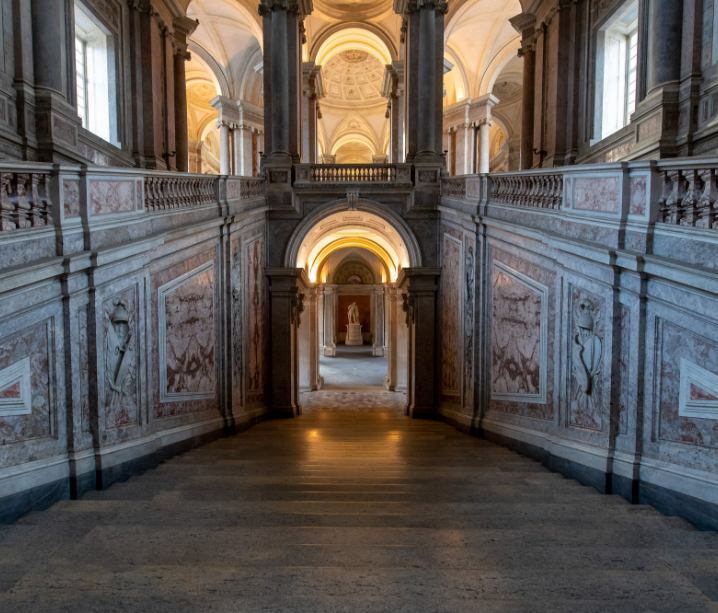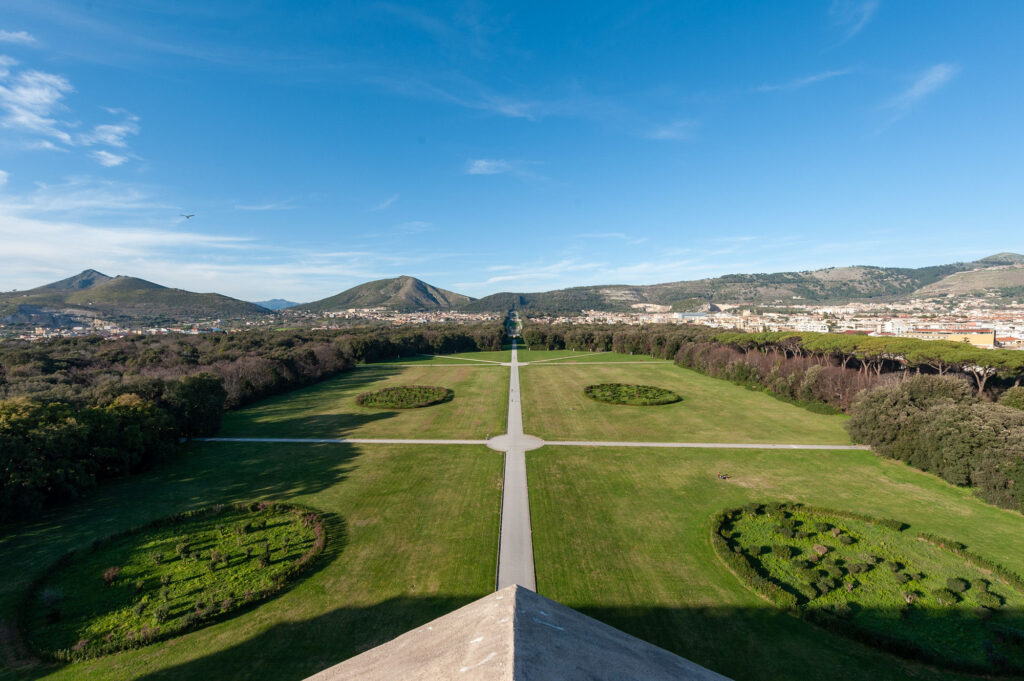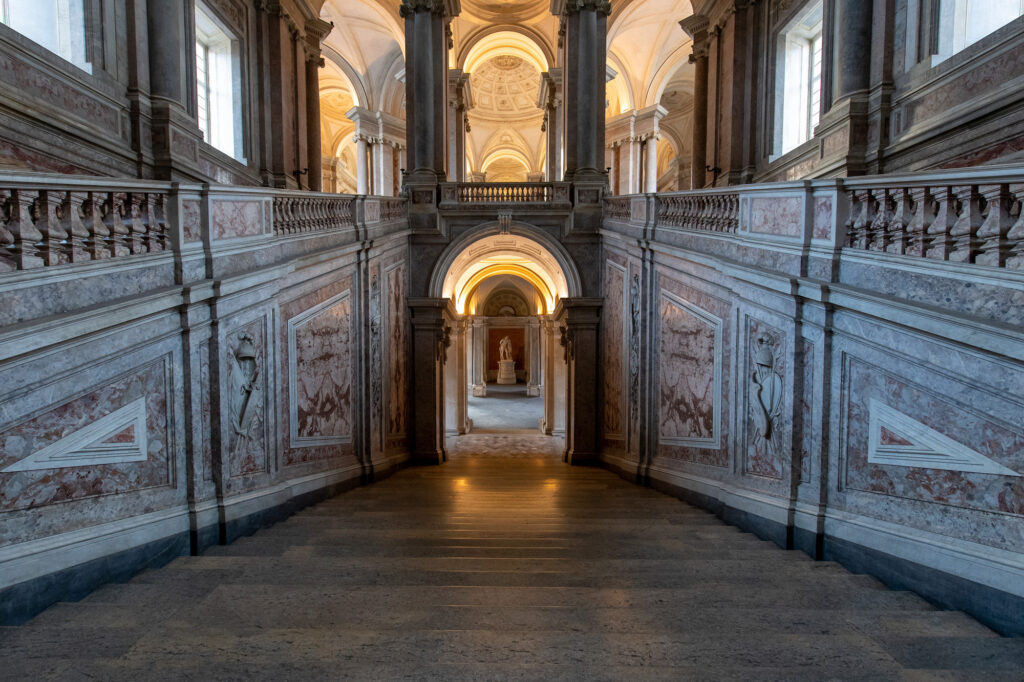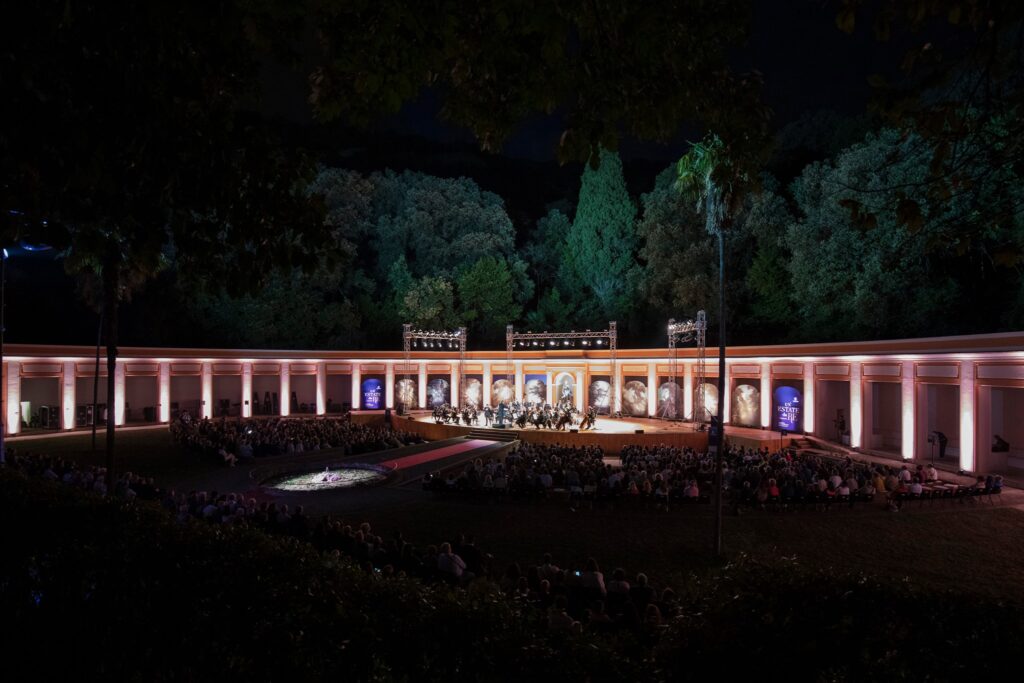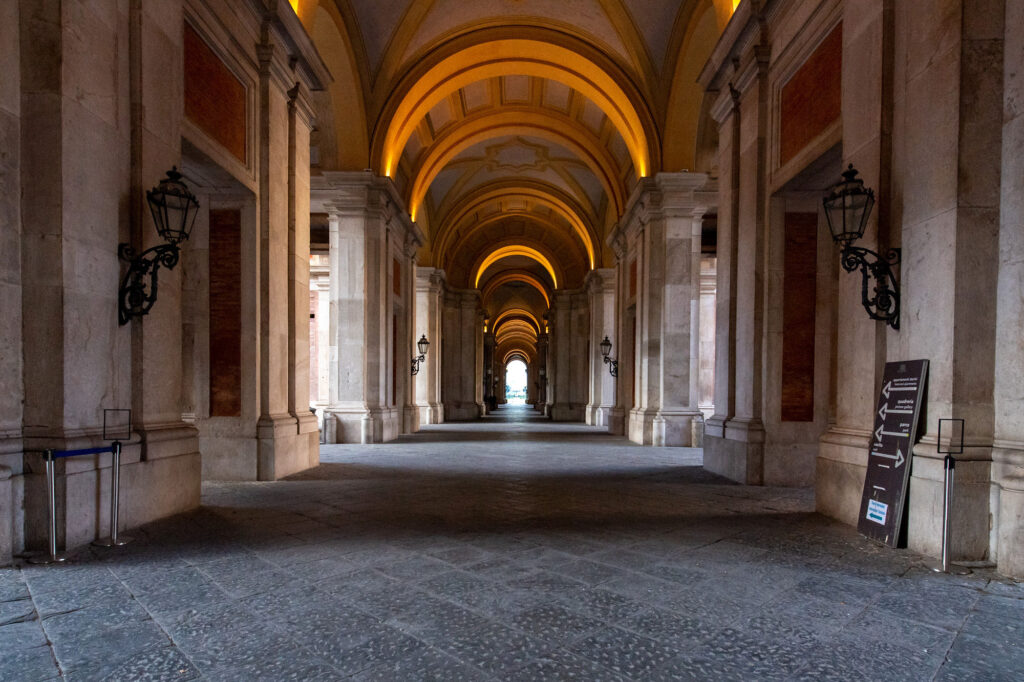A work of Vanvitellian engineering
The Caroline Aqueduct is a hydraulic engineering work designed by the architect Luigi Vanvitelli. Its construction begun in 1753 and gave life to King Charles of Bourbon’s dream. Thanks to the aqueduct, the water reaches the Royal Park of the Royal Palace of Caserta at the height of the waterfall, and from there it descends to feed the complex system of pools and fountains after traveling for 38 kilometres. The aqueduct begins its journey at the foot of Mount Taburno, in Bucciano within the Airola area, where it draws from the sources of the Fizzo at an altitude of 243 meters above sea level. Its conduit continues mostly underground, signalled on the surface by 67 towers for control and venting. It takes 17 years to complete and a total sum of 622,424 ducats. In 1826 Antonio Sancio, administrator of the royal sites of San Leucio and Caserta, defined the project as “one of the most unique that exists in Europe”. The aqueduct is the element that has impressed foreign visitors the most since the eighteenth century.
 Find out more
Find out more
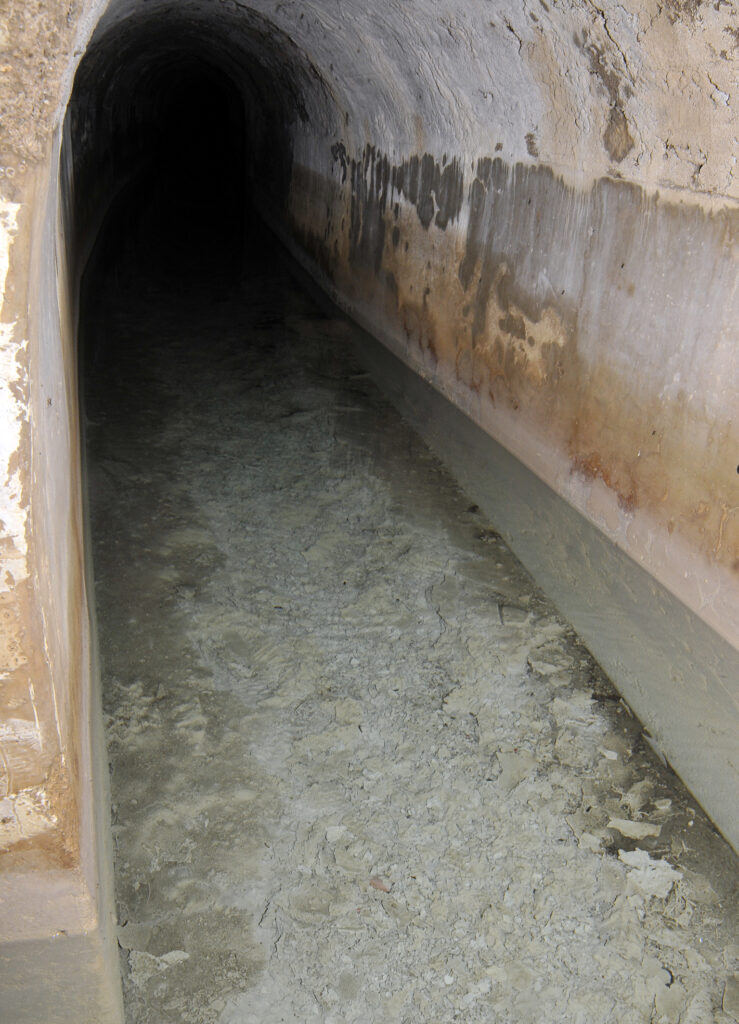
Vanvitelli’s Research
Before the construction of the Caroline Aqueduct, Luigi Vanvitelli was engaged in researching the area for the quest of finding a source. The basin to draw from had to be able to allow not just the construction of the Royal Palace of Caserta, but a much bigger project. The architect found the necessary spring waters while on the trail of Aqua Iulia, the aqueduct that in Roman times supplied the ancient city of Capua. The choice falls on the land of the Duke of Airola, in the Taburno area, where Vanvitelli discovers a wealth of water such as to allow the beginning of the aqueduct’s works.




The Aqueduct Trail
Before reaching the Royal Palace of Caserta, the Caroline Aqueduct follows a long path that crosses the current provinces of Benevento and Caserta. The conduit passes through the municipalities of Bucciano, Airola, Moiano, S. Agata de ‘Goti, Durazzano, Valle di Maddaloni, Caserta. The aqueduct, which runs mostly underground, comes out into the open in some places via canal bridges. These include the Charles III Bridge located in Moiano, the bridge that crosses the Durazzano Valley and the most famous “Bridges of the Valley”, where the conduit crosses the Maddaloni Valley through a structure with three orders of arches, 60 meters high and about 500 meters long.



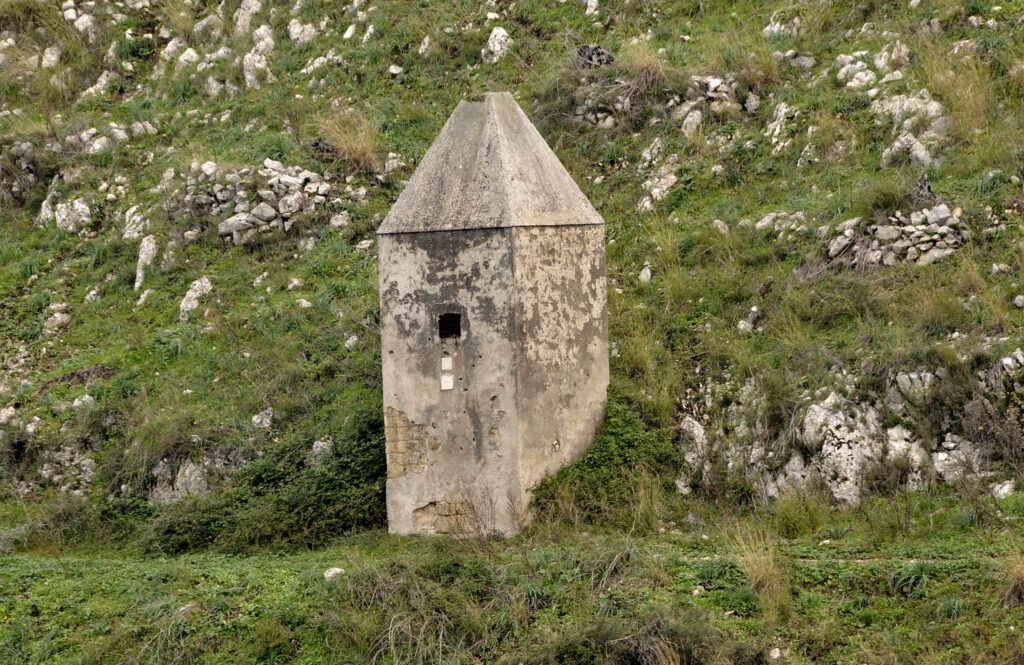
The Territory’s Supply
The far-sightedness of Charles of Bourbon’s project is evidenced by the fact that the Caroline Aqueduct supplied not only the Royal Palace of Caserta, but also other centres in the area. Before arriving at the Royal Park, a branch detached from the aqueduct to reach San Leucio, while another branch departed from the Dolphin Fountain and proceeded towards the Royal Site of Carditello, also serving the municipalities crossed along the way. In the original project, the Caroline Aqueduct also had to serve another purpose: to enhance the water supply of the city of Naples. For this reason the so-called “Tronco di San Benedetto” (San Benedetto’s log) was built, the aqueduct that took the water out of the fountains of the Royal Park and fed it into the seventeenth-century Carmignano Aqueduct, thus proceeding towards Naples.








